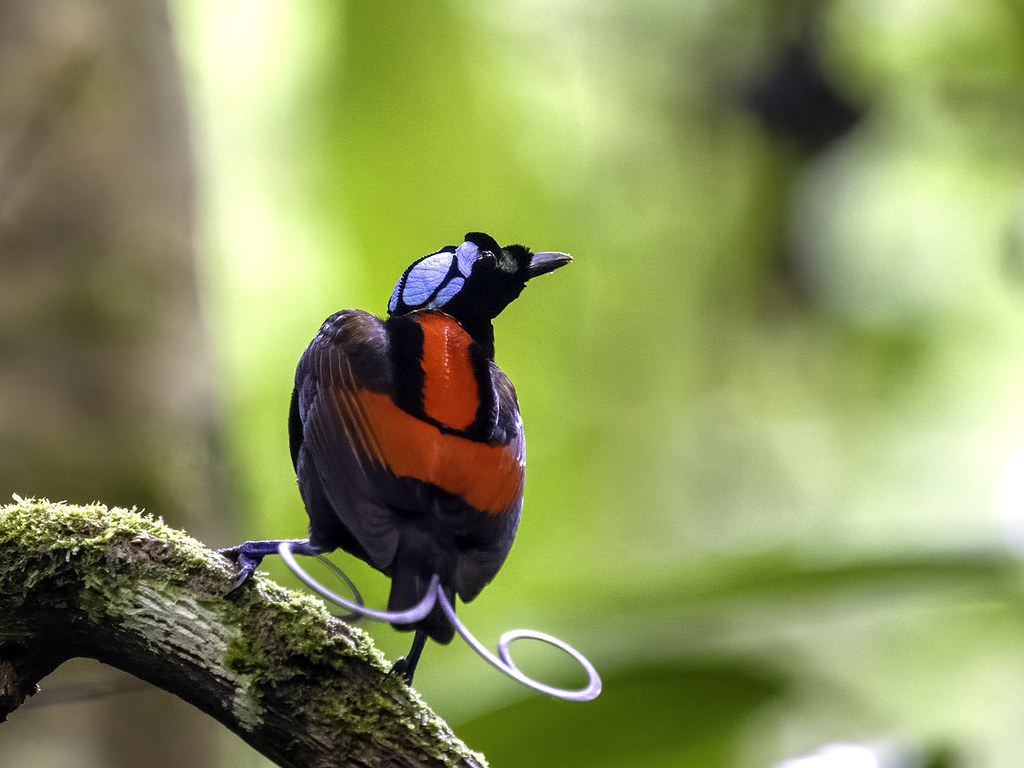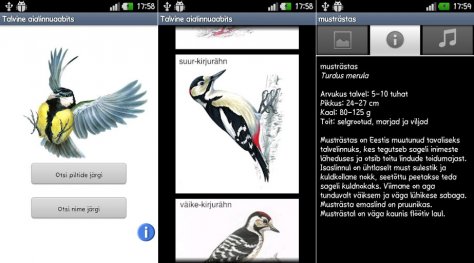
A field guide is a must as is a decent pair of binoculars. The best way to learn to identify birds is from an experienced birdwatcher. Many local Audubon societies offer field trips which are excellent for learning birds. After you learn how to identify a few birds, identifying others will be easier. At first it will be difficult as many birds, especially smaller ones, are hard to distinguish. After awhile, with experience and help from others, your skills will develop so that you know what to look for and what to ignore. You will learn the common birds so that you can more easily search for the uncommon ones. The bird populations change with the seasons, so it’s a continual, but fun, challenge.
Learning to identify birds is a challenge.
For great information on bird identification and natural history, go to Cornell’s Laboratory of Ornithology.
The following has been modified from the Audubon Society:
When faced with a bird in the field, a birder first takes note of its key distinguishing features, or “field marks”— overall size and shape, bill structure, plumage (the markings on head and body)—and its actions. Many birds can be identified by the colors and patterns of their plumage alone, but plumages can be difficult to assess in the field. Distance, tricky lighting, individual variation, and damage from staining, oil, or simple wear and tear (old feathers often become sun-bleached and bedraggled) can lead to the absence or obscuring of field marks. Therefore, even before studying a bird’s plumage in detail, a birder takes note of its size and structure.
The structural features of the head and the size and shape of the body provide crucial information for the identification of many species. It is usually possible to “narrow down” the identity of a bird in the field to just a few possibilities by determining its overall proportions: Is the body slender or thickset? Are the neck and legs long or short? Are the wings short, broad, and rounded or long, narrow, and pointed? How many toes are on the foot? Oftentimes, the bird’s bill alone is enough to narrow down the identification: Is it thin or heavy? Long or short? Narrow or broad? Because size can be hard to judge in the field at any distance, even on a nearby bird, it can be useful to compare the size of the bird in question to that of birds around it, if possible.
It is not possible to identify every bird in the field. Young Allen’s and Rufous Hummingbirds, for instance, are essentially identical, only distinguishable with the bird in hand. There are also individual birds that stump even proficient birders. These include birds that have unusually pigmented plumage, bills or legs that differ in color from most of their species, or broken or deformed bills. Innately aberrant birds are usually rare, except in shorebirds and gulls, two groups in which atypical individuals are often observed.
Essential in identifying birds is recognizing their physical features. Check this page of bird external anatomy.
 Links to Help in Identification of Birds
Links to Help in Identification of Birds
A Guide to Not Mis-Identifying
Backyard Bird Identifier
Bird Identification Questions for Europe
Cornell Laboratory of Ornithology Online Field Guide
Ducks at a Distance
Gull Identification Website
Field Guides to the UK and Europe
Guide to North American Bird Songs and Sounds
Hummingbird Identification Tips – US and Canada
ID of Ducks by Wing PlumageIdentifying Wild Birds
Online Identification Guide to the Birds of Britain and Europe
Patuxent Bird Quiz – an excellent way to check your birdwatching skills
Sea and Shorebird Identification
Tools for Learning about Birds
Wildbirds


Hello, fellow birder,
I have just taken a few marvelous close-ups (through a window) in the AM of what I believe is an “Olive backed Sunbird” here in Palawan, Philippines. But there seems to be conflicting identification markings which lead me to consider that he might be of the species, “Apricot breasted Sunbirds.” Therefore, I am requesting permission to send you some pics for your proper identification. That is of course, if you will permit it, and have the time.
Thank you very much,
In God’s Grace,
Ray and Lynne Alford
Please forward photos and I will try to ID it
Dear Sir
I live in the Denver/ Boulder CO area, The Red shafted Flickers in our area have a bright orange shaft. Is this a natural variant or perhaps Yellow shafted Flickers have interbred with the Red shafted?
Thanks MDW
For many years now, we have only the Northern Flicker. The old names of Yellow-shafted Flicker and Red-shafted Flicker were abandoned when it was discovered that the two forms interbreed- they are the same species but their color varies from deep red to bright yellow and everything inbetween.
Pingback: How to Identify Birds — A Starting Guide – Bird Apartment
Pingback: Birds of Europe